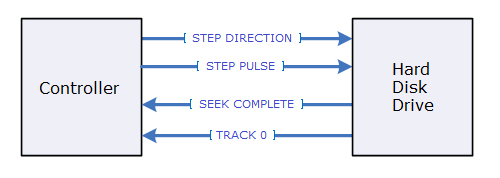
| Drive | Seek Mode | Step Pulse Rate - Limitations | Comment |
|---|---|---|---|
| ST-506 | Slow: | 3 ms or greater (that is milliseconds, not microseconds) | Drive predates buffered seek mode |
| ST-412 | Slow: Buffered: |
3 ms or greater (that is milliseconds, not microseconds) Between 5 and 500 µs (source) |
Conflict: Page 18 of the ST-412 manual at this link indicates a buffered seek range of 25 µs to 200 µS |
| ST-225 | Slow: Buffered: |
3 ms or greater (that is milliseconds, not microseconds) Between 5 and 200 µs (source) |
|
| ST-4038 | Slow: Buffered: |
3 ms or greater (that is milliseconds, not microseconds) Between 10 and 70 µs (source) |